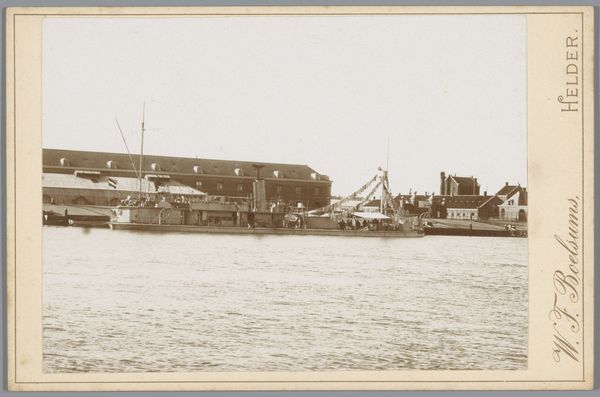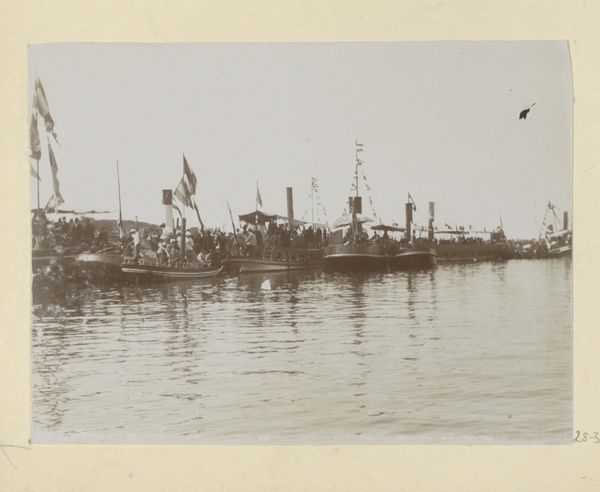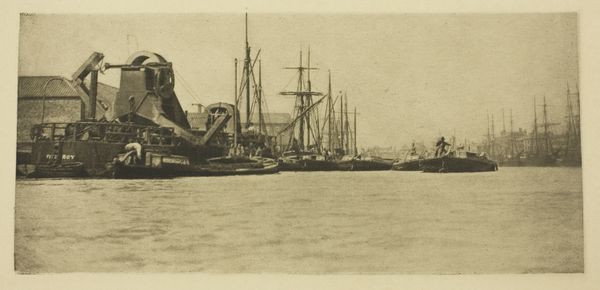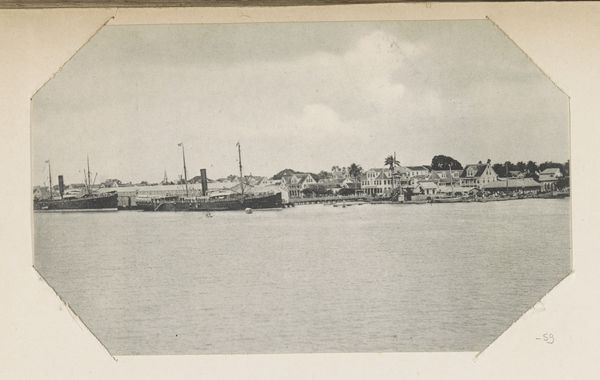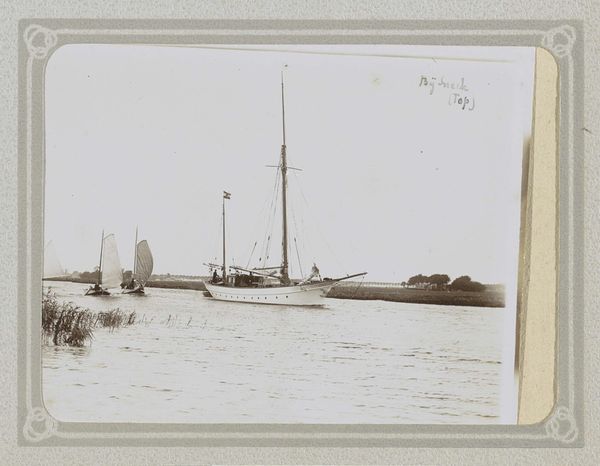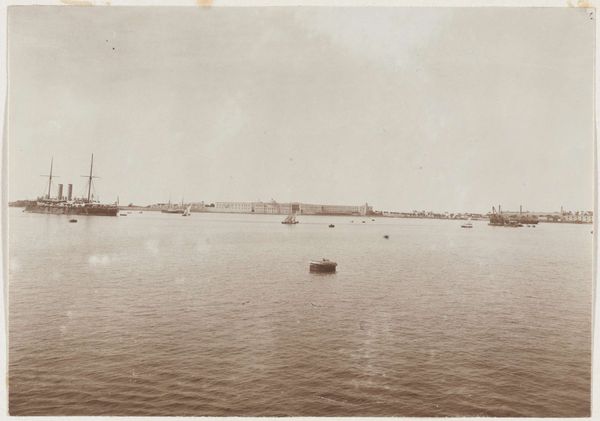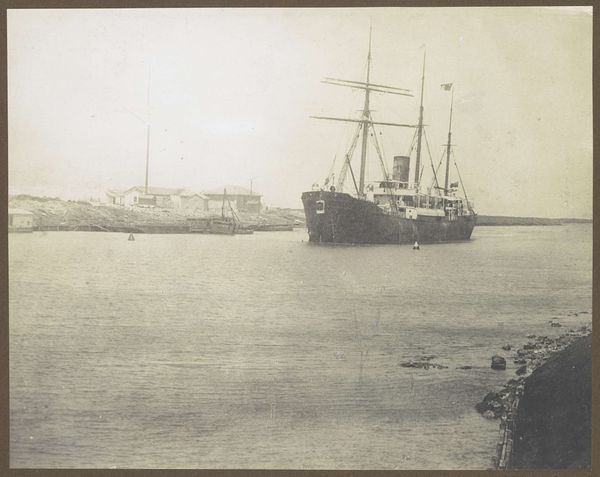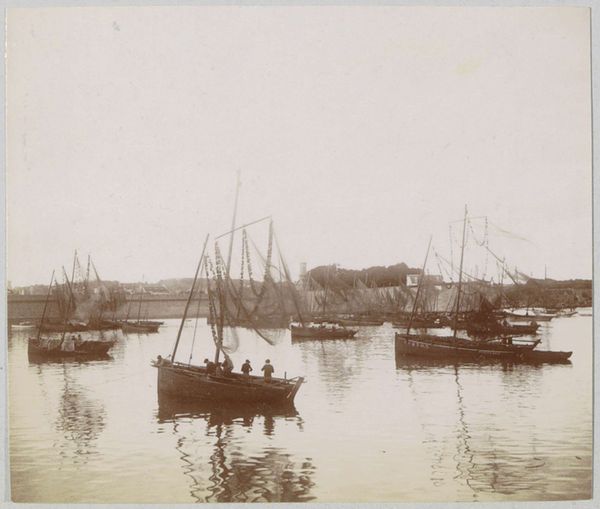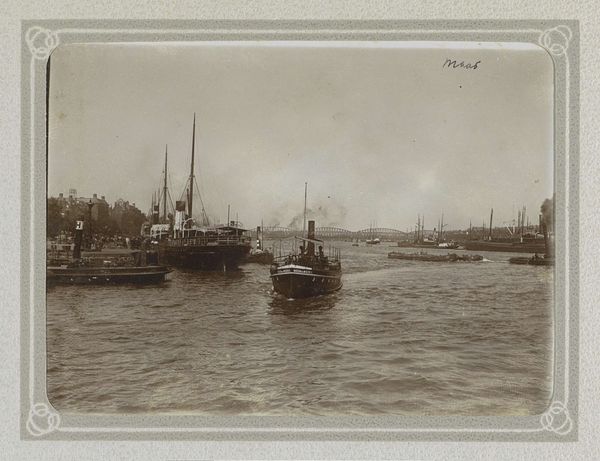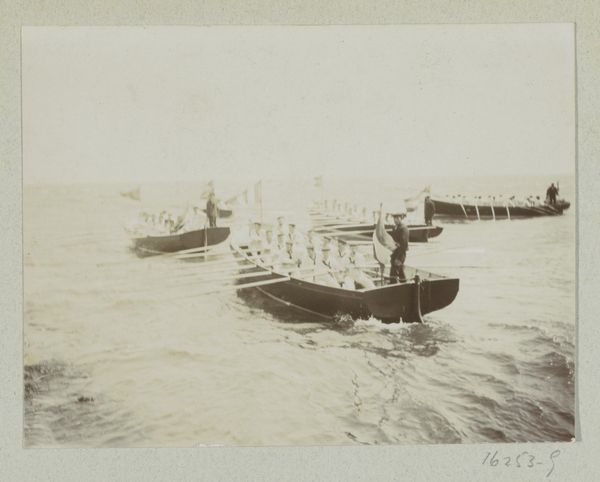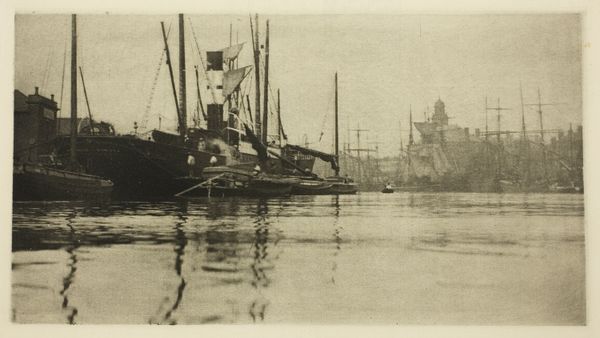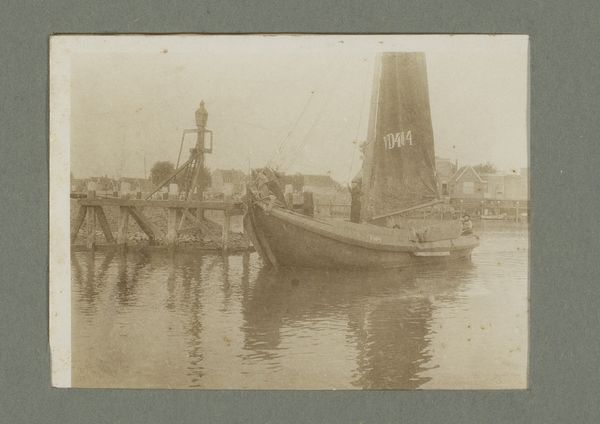
photography
#
16_19th-century
#
pictorialism
#
landscape
#
photography
#
realism
Dimensions: 8.4 × 20.4 cm (image); 24.9 × 30.1 cm (paper)
Copyright: Public Domain
Curator: Sobering. Is that the right word? The composition has this subdued quality to it. Editor: Perhaps. This is "The North River" by Peter Henry Emerson, dating back to 1887. What you're responding to might be Emerson's dedication to representing the working class. The photograph itself isn’t simply capturing a landscape, but depicting labor on the river. Look at the industrial structures along the riverbank—they testify to the active production happening in that area at the time. Curator: You're right, seeing the watercraft in motion connects to what you are saying about industrial labor, especially the dredging barge and smaller vessels busily doing...whatever vessels did then! The image looks like platinum or possibly gelatin silver; how does that fit his aesthetic? Editor: Exactly. Emerson favored platinum prints because of their tonal range and capacity to show detail. Platinum as a material afforded him the chance to really focus on detail and on reflecting that labor, capturing a sense of the real conditions that workers experience—it almost rejects idealization. And because platinum printing involved complex chemical processes, its difficulty spoke to the craft involved in creating art. Curator: Do you think this challenges or conforms to expectations? Did his middle class viewers appreciate the gritty scenes and industrial views? Editor: I think the image can unsettle those very class assumptions and force the viewer to recognize the importance of labor within the broader societal landscape. Curator: And so in representing these people and processes, Emerson aimed to critique the more sanitized, idyllic scenes common in traditional art. The materiality here—the choice of photography, the focus on the river—frames the space of industry itself as a contested space. Editor: Precisely! His use of the camera allowed him to document the rapidly changing landscape with both accuracy and a critical eye toward how labor and industry shaped people's lives. Curator: Makes me appreciate it more. It seemed like a simple landscape, but it really has a narrative. Editor: Indeed. Hopefully it gives everyone who encounters "The North River" pause to think more critically about its broader social dimensions.
Comments
No comments
Be the first to comment and join the conversation on the ultimate creative platform.
